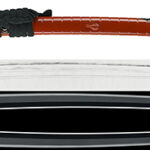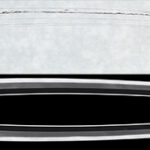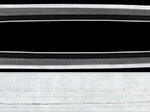Ordering number:23090
Katana in Shirasaya with Koshirae (NBTHK Hozon Token)
Signature: Mumei (attributed to Harima Daijo Kiyomitsu, 播磨大椽清光)
(Gold inlay inscription): "Futatsu-dō jō waki ke shita hon-dō Tsuchidan ni irikitte Narita Jirōbee"
二ツ胴上脇毛下本胴土檀ニ入切手成田次郎兵衛
We divide 4 sections for each sword as Saijyo Saku, Jyojyo Saku, Jyo Saku and Regular Saku.
This work is ranked as Jyo Saku for Mumei (attributed to Harima Daijo Kiyomitsu).
Habaki: Single plain copper with black lacquer
Blade Length: 2 shaku 3 sun 4 bu 5 rin (71.05 cm or 27.98 in)
Curvature: 4 bu (approximately 1.21 cm or 0.48 in)
Mekugi Hole: 1
Width at Base: 3.17 cm (1.25 in)
Width at Yokote: 2.09 cm (0.82 in)
Thickness: 0.81 cm (0.32 in)
Era: Edo period, around the Kanbun era (1661-1673)
Shape: This katana features a wide mihaba, thick blade, and shallow curvature typical of Kanbun Shinto style. It has a bo-hi carved on both sides.
Jigane: The itame-hada is well-forged with jifu and features ji-nie.
Hamon: The hamon is a suguha with occasional waviness, made with nie.
Features: Kiyomitsu was a group of swordsmiths active around the Kanbun era in Etchu Toyama. The founder of the Kiyomitsu lineage was part of the Fujishima school from the Eisho era of the Muromachi period, primarily active in Kaga Province. This piece, attributed to Harima Daijo Kiyomitsu, continues that tradition. It also bears a cutting test inscription by Narita Jirōbee.
Koshirae:
Tsuba: Round shakudo migaki-ji tsuba.
Fuchigashira: Shakudo nanako-ji with a high-relief carving of human figures, decorated with gold, silver, and copper inlay.
Saya: Dark brown lacquered scabbard.
Menuki: Dragon motif.
NBTHK Hozon Token
Aoi Art’s Certificate
Whole Oshigata
Order Form
Related Items:
 Katana:Hizen Kuni Ju Oumi Daijo Fujiwara Tadahiro with Saidan mei(NBTHK Tokubetsu Hozon Token)
Katana:Hizen Kuni Ju Oumi Daijo Fujiwara Tadahiro with Saidan mei(NBTHK Tokubetsu Hozon Token)
 Katana: Mumei (attributed to Den Rai Kunitoshi)(NBTHK 37th Juyo Token)
Katana: Mumei (attributed to Den Rai Kunitoshi)(NBTHK 37th Juyo Token)
 Katana: Echizen Ju Harima Daijo Fujiwara Shigetaka(2nd generation)
Katana: Echizen Ju Harima Daijo Fujiwara Shigetaka(2nd generation)
 Katana: Bizen Koku Ju Osafune Magouemon Jo Kiyomitsu(NBTHK Tokubetsu Hozon Token)
Katana: Bizen Koku Ju Osafune Magouemon Jo Kiyomitsu(NBTHK Tokubetsu Hozon Token)
 Katana: Hizen Koku Kawachi no Kami Fujiwara Masahiro 肥前国河内守藤原正広(NBTHK Tokubetsu Hozon Token)
Katana: Hizen Koku Kawachi no Kami Fujiwara Masahiro 肥前国河内守藤原正広(NBTHK Tokubetsu Hozon Token)
 Katana: Hizen Koku Ju Omi Daijo Fujiwara Tadahiro (NBTHK Tokubetsu Hozon Token)
Katana: Hizen Koku Ju Omi Daijo Fujiwara Tadahiro (NBTHK Tokubetsu Hozon Token)







